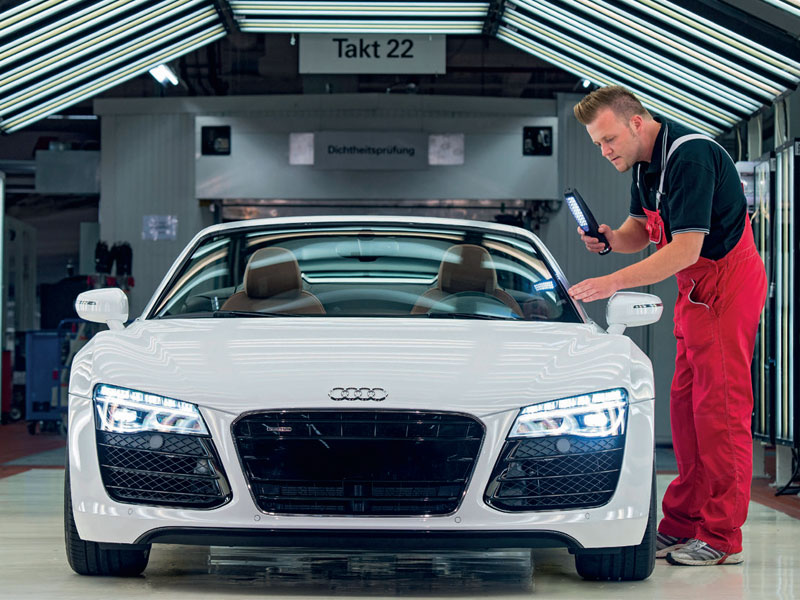
Digitization of dealerships: how to adapt to new market challenges
If there is one industry that is leading the digitization process, it is the automotive industry. A digitization that jumps from manufacturers to dealers, who must proactively adapt to the new business models and needs of their customers. How fast should they do it?
All of this will be determined by the phenomena that are already making their presence felt in the sector: new products and services linked to the electric car, autonomous and connected, and efectist finishes, rich in nuances, which come to satisfy the personalisation demands of customers.
Digitization brings us closer to the customer
New technologies are transforming the automotive sector in all its areas. The digital came a long time ago to stay, so companies in the sector, such as dealers, must adapt their businesses to the new needs and demands of the consumer.
In this sense, the digitization of the dealership itself becomes an essential element to satisfy, for example, the hyper connectivity that surrounds the user, which is expected to continue growing in the coming years.
In this way, in addition to connectivity, concepts such as the Internet of Things (IoT), Big Data, cloud computing or artificial intelligence will be increasingly present in the day-to-day life of the dealers, who, according to a study by the employers’ association that groups them together.
The consultancy firm will be smaller spaces where technology will play a leading role, with experts who will offer a unique experience adapted to the mobility needs of each customer.
An increasingly digital automotive sector
Whereas before consumers went to the dealership in search of information regarding the models of vehicles of the brand, now the vast majority of users come to the exhibition after having done a great job of collecting data over the Internet, and even after having configured, online, to the smallest detail of their vehicle.
So, more and more, the consumer is looking for another type of experience in his contact with the dealer. That which allows them to “feel” the brand. To achieve this, according to the report, the points of sale, in the process of digitalization, will make a great technological deployment so that the customer knows and falls in love with the brand, its products and services.
Along these lines, and according to a report by the online platform DriveK, more and more users are searching for new vehicles through the Internet, and the trend will only strengthen in the coming years.
Thus, in three years, 86% of new car searches will start from a smartphone or IoT device. Furthermore, in the same period of time, 91% of the purchase processes will include at least one action from a mobile device, such as chatting with the dealer via WhatsApp, receiving 360º photos to get a personalized car experience or watching a video via YouTube.
What’s more, 68% of people interested in buying a car, according to Google data, search online after viewing this type of content. Without a doubt, this is data that speaks of the strong digitization that the automotive sector is already undergoing.
Digitization, a pending task for dealers
However, there is still a long way to go when it comes to digitising the dealership. According to another study of the MotorK digital platform, up to 56% of the websites of official European dealers still lack the basic functions of a modern portal.

In other words, these websites would not be meeting the expectations of potential car buyers or their after-sales services.
In this line, 54% of websites do not have a list of new or semi-new vehicles in stock, while tools such as financial calculators, loan simulators and the valuation of used vehicles are not available in 86% of the pages.
Similarly, although most websites have a button to call the dealer directly, 25% of them lack an easy-to-use contact page, and online chat functionality still does not reach 5% of all portals analyzed. In addition, 22% of dealers do not have a form to book a test vehicle.
In this sense, when it comes to digitizing the dealership, tools such as ‘chatbots’ are becoming more and more popular, allowing customers to interact with them quickly and at any time. This is an aspect to consider, as it is estimated that 44% of online contacts received by distributors in one day are not generated during business hours.
In addition, through this type of tools the customer is offered a unique experience, because it is increasingly accustomed, as a user of all types of services, to handle applications that provide immediate answers. Why shouldn’t I expect the same when it comes to contacting the dealership when you want to buy a car or request an appointment in your workshop?
How will digitization affect the dealer’s after-sales service?
The after-sales services will also undergo a significant transformation, becoming more technological and rarely accessed by the customer, who, for example, will be able to deliver and collect his vehicle at home.
Also, it is already a reality to be able to track a repair from digital devices and comfortably from home, thanks to specific software tools for dealers. It’s a service that helps improve the customer experience and increases confidence in the dealer’s workshop.
In this way, the after-sales area is obliged to become increasingly digital. Not only to be more efficient and productive, for which you can resort to good dealership software, but also to achieve better communication and greater knowledge of their customers.
Only in this way will it be possible for the concession team to anticipate the needs of its customers and generate a relationship of trust that helps their loyalty.
Digitization of the body area
As far as the body area is concerned, the digitization of processes will not only be important to contribute to the overall improvement of the efficiency and productivity of the dealership.
In this specific section, the improvements will be aimed at reducing cycle times, avoiding repetition of work, gaining control of processes and, ultimately, optimizing the work of the body shop and paint, an objective to which we can contribute, as a leading manufacturer of paint, minimizing the environmental impact of repainting operations.
We are committed to technologies that respect the environment and the professionals who use them. For products and formulations that respond to our commitment and environmental awareness, and that favor the best use of resources.
All of them, moreover, backed by the most complete range of digital tools. Those that make even easier the day-to-day life of the painter and the digitization of the area of the workshop on which depends the excellent finish of the vehicles that are repaired.
In this sense, we are also aware that the contribution of the dealer’s painting area to the profitability of the business as a whole is directly related to the efficiency of the processes. This is precisely where processes such as Rapid Cycle Time (RCT) allow a significant reduction in cycle time, optimising resources and maximising the benefit of each intervention.
Thanks to this rapid refinishing process, automotive professionals can benefit from optimised use of the cab, a reduction in workshop energy consumption of more than 50%, and savings of up to 3:30 hours on every sheet metal and paint repair.
Do you want to increase the number of cars passing through the paint booth to 8 per day? Our RCT system helps to achieve this by betting on a greater environmental awareness of the area of sheet metal and paint of the dealership.
